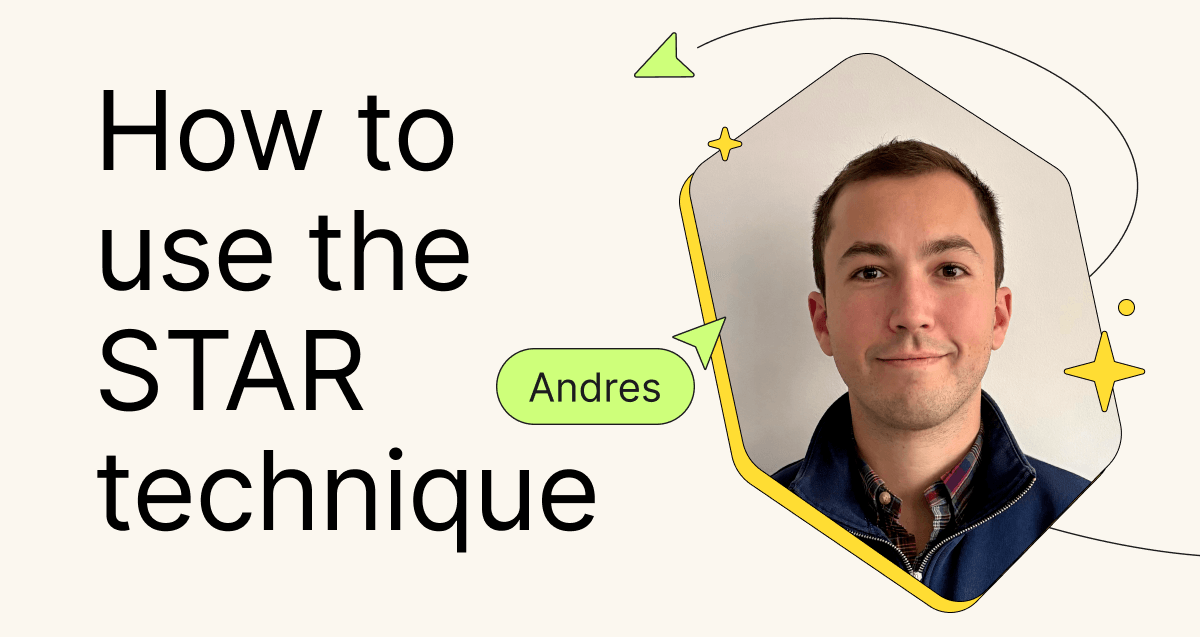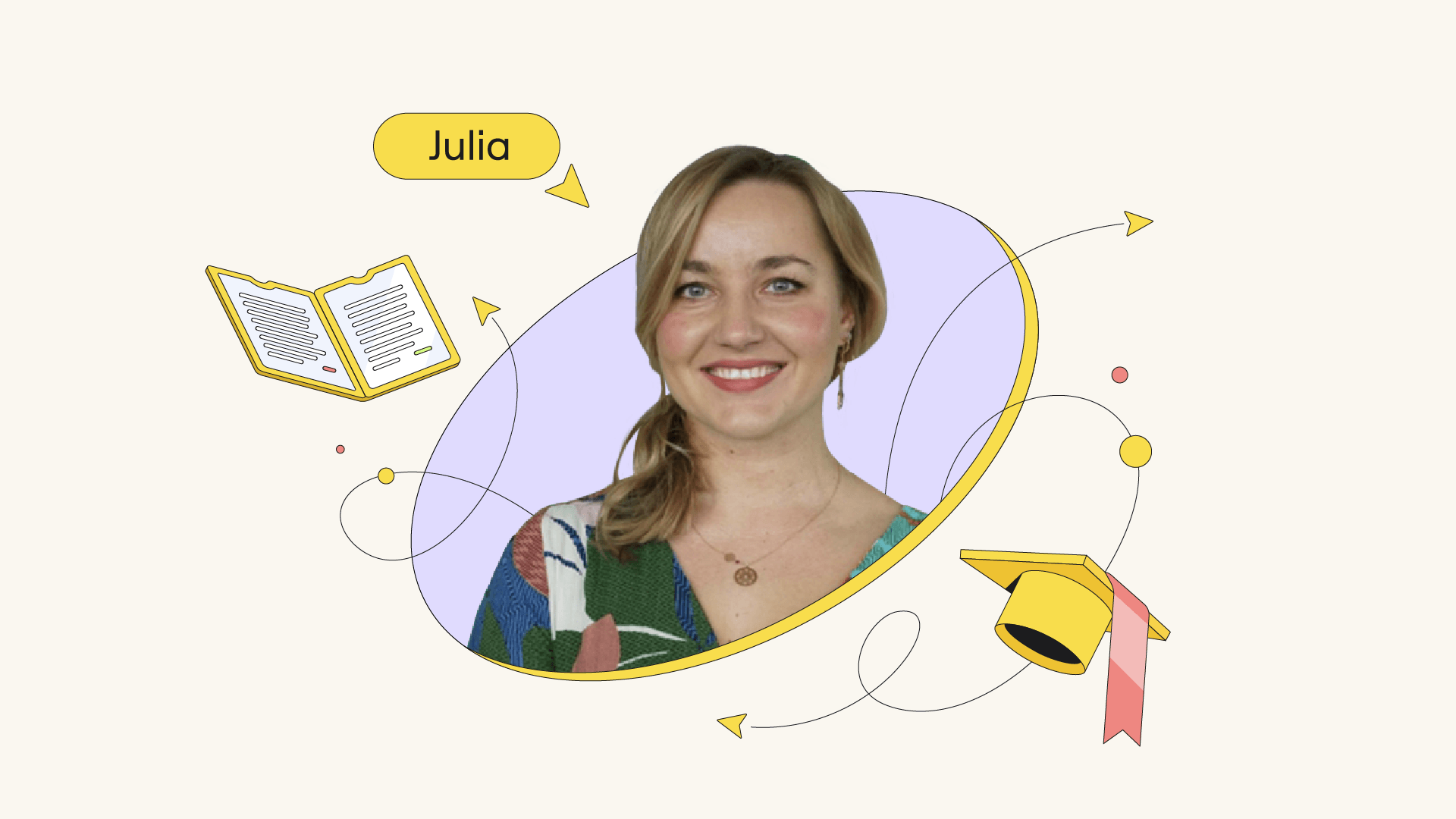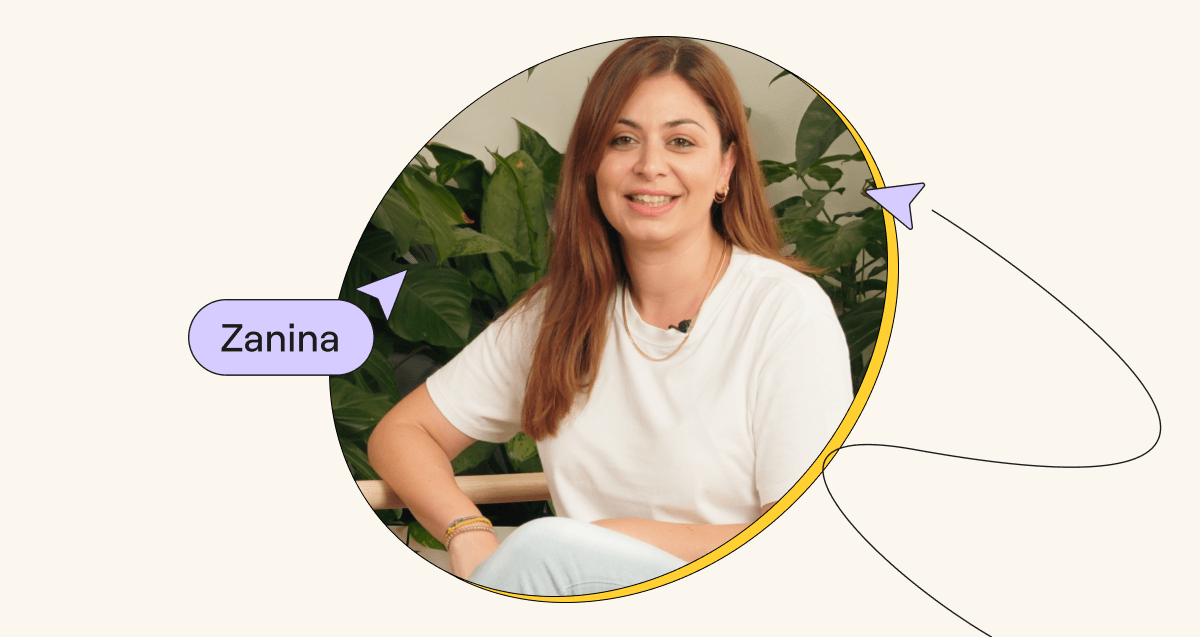Have an interview coming up and looking to brush up your interview skills? The STAR interview technique is an excellent tool to have in your career-hunting toolbox. It’s a methodical, concise approach for making sure that your interviewer sees your expertise in all its glory, including your ability to learn, adapt, and grow.
When you can showcase these traits effectively, you’re much more likely to perform well in the interview process.
The STAR technique is a valuable tool in interviews because it provides a structured and effective way for candidates to communicate their experiences and achievements through real-life examples. In essence, this technique enhances the clarity and depth of candidate assessments, ultimately leading to better hiring decisions.
I’m Andres, a Technical Recruiter at Miro. I’ve seen firsthand how the STAR technique has helped some of the best candidates express their skills, and stand out in their interviews. Now I want to share a closer look at the technique, and share some of my best tips for how to use it in your next interview.
What is the STAR technique?
The STAR technique (also called the STAR method) is essentially a storytelling strategy for answering certain types of interview questions. These questions are typically of the “Tell me about a time when…” persuasion.
But it’s important to keep in mind that you can use the STAR technique anywhere, including your resume, cover letter, and portfolio—pretty much anywhere you need to showcase your professional expertise and value to a company.
STAR is an acronym that stands for Situation, Task, Action, Result. Here’s a breakdown of those 4 elements and what they mean:
Situation: Briefly paint a picture of the specific scenario you’ll be talking about. Keep it concise and relevant, staying mindful not to share unnecessary details.
Task: What were you responsible for accomplishing in that situation?
Action: Briefly explain the steps you took to accomplish the task.
Result: Tell them about the outcome, including what you learned and how you applied your skills (and if possible, any quantifiable metrics tied to your actions).
Why is it important?
When used effectively, the STAR interview method can be helpful for both you and the people you’re interviewing with. Here are just a few of the benefits for you:
- Provides a clear structure for your responses so you can answer succinctly and with clarity.
- Swiftly communicates your impact, talents, and ability to rise to new or challenging situations.
- Reduces the chances of nervous rambling or over-sharing (which many of us aren’t a stranger to!).
- Helps you better recall key points to bring up, since they’re structured and specific.
- Boosts your credibility and positive impressions of your communication abilities, as well as your competence and contributions in the workplace.
And a few of the top benefits for your interviewer:
- Helps them to see your immediate value without having to dig deeper or make assumptions.
- Aligns with their expectations for a strong and impressive interview.
- Allows them to assess your skills, qualifications, and competencies based on real-world examples.
- Gives them deeper insight into the way you think, the way you approach your role and responsibilities, and how you problem-solve.
- Because they often gauge your skills and communication style using behavioral interview questions, STAR technique answers show these traits quickly.
During interviews, we’re interested in understanding the specific challenges candidates faced, the actions they took to address them, and the measurable outcomes they achieved. We seek evidence of their problem-solving skills, leadership abilities, adaptability, and the potential for making a positive impact on the organization.
STAR technique example
Let’s walk through a fictional STAR method example so you can see it in action. Below is a question asked by an interviewer, and a candidate’s response broken into the 4 STAR components.
“Give me an example of a situation where you were able to improve an existing process or system, for either yourself or your team.”
Situation: In my last role as product manager at a startup, I worked with the CEO and other team members to innovate on our product features and brainstorm ideas. We found that every week, new ideas were flying around from all angles and multiple channels (Zoom meetings, Slack, email, and our product management software).
Task: All the new ideas were great, but I needed to come up with a uniform, contained, and team-friendly way to organize and prioritize them. We needed the ideas to be accessible while making sure we didn’t fall victim to “shiny object syndrome,” where we pursued new ideas to the detriment of our existing plans.
Action: I created a shared Miro board where any team member could input their new ideas, with links, notes, and labels for whose idea it was. Every week during our team meeting, we set aside 15 minutes to go through the board together and prioritize all the to-do items into time-based groups, like “next week,” “next month,” “next quarter,” and “next year.”
Result: It was an amazing tool for our organization, brainstorming, and decision-making. We weren’t distracted or derailed by ideas that came up randomly during the day, and we had a platform as a team to figure out which features and priorities would be most impactful versus which ones should wait.
STAR technique interview questions
While I couldn’t possibly list all the potential questions it would be good for, here’s a quick STAR method cheat sheet to jump-start your research.
- Tell me about a time you received feedback and implemented it successfully.
- Have you ever had a conflict with a coworker? Tell me how you resolved it.
- Give me an example of a mistake you made at work and how you handled it.
- Have you ever spotted that a superior was wrong, and had to correct it? How did you go about it?
- Explain a situation where you had to adapt quickly to a sudden change in your work process or environment.
- Have you ever had to work with one or more people whose communication or working style was different from yours? How did you work through those differences?
- Tell us about a time when you didn’t meet a client’s expectations, and how you moved forward.
- Give us an example of a time when things just didn’t go your way. How did you handle it? Did you learn anything from it?
- Tell me about a time you performed well under pressure.
How do you prepare for a STAR interview?
One of the best ways to prepare yourself is to research more questions specific to the role you’re interviewing for. This is important because, naturally, an interview will change slightly depending on the position and function, like an engineering interview vs. a customer success interview.
Generally speaking, you’ll be best prepared if you brainstorm a handful of situations that you can pull out of your back pocket and adapt to the STAR format during the interview. These situations can include things like:
- Accomplishments you’re proud of
- Times you went the extra mile
- Conflicts you were able to successfully resolve
- Challenges you were able to overcome
- Mistakes you learned a lesson from
- Times you exemplified teamwork
- Examples where your actions brought quantifiable results
If you’re having trouble thinking of these organically, consider occasions where you were praised at work (or in school or an internship, if you don’t have work experience yet).
“Think of an example of your past experience – a project you worked on, a process that had to be iterated, or how you had to collaborate with people from different teams. Explain why we are discussing this example and the problem you tried to solve. Focus on the actions you took and state the outcome: What happened at the end? Be precise, short, and to the point. Rehearse at home and write down your answer.”
Zanina Katira, Business Recruiter
Here are a few more tips to get you into the mindset of using the STAR method for answering questions:
- Be careful to avoid stories that have negative outcomes or that you feel upset about (for example, any resentments or blame you feel for others). Speaking poorly of your co-workers never makes a good impression.
- Practice in the mirror or with someone else. “Rehearsing” your answers is a great way to find your flow and figure out which details make the most sense to include. You can even record yourself practicing and listen back.
- Try to keep each of the 4 STAR components to 3 sentences or less. This helps make sure you’re not rambling or including unnecessary details.
- Don’t stress yourself out trying to predict every possible question you could be asked. As long as you take some time to reflect and plan a few answers, you’ll likely have enough juice to carry you through.
- Remember: your stories don’t need to be incredible or awe-inspiring—they just need to showcase that you have hard and soft skills that would make you a good addition to the team.
Using the STAR method in a Miro interview
Miro recruiters and team leaders love to see candidates voluntarily using the STAR method. If you’re preparing for an interview at Miro, try to come up with some stories that tie into our 4 core company values:
- Play as a team to win the world
- Focus on impact and make it happen
- Practice empathy to gain insight
- Learn, grow, and drive change
“The STAR interview method shines most brightly in behavior-focused interviews. In a Miro interview, these include sessions such as Team, Hiring Manager, Leadership, and Cultural Fit interviews, which seek to assess your soft skills, motivation, interests, and focus on your previous and current experiences and projects you have worked on.”
Renata Machado, Technical Recruiter
Here’s a great article on some of the most common Miro interview questions, along with some tips on how to answer them.
You can also check out our free STAR technique template, which you can fill out using a Miro board.
Fast-forward to your value
The STAR technique isn’t just a helpful way to organize your thoughts—it’s a fast track to communicating and showcasing all the skills and traits you can bring to a company. Interviewers will appreciate that you’ve taken the time to proactively prepare your responses in a clear, succinct format that focuses on the most important details. Everyone wins in the end.



